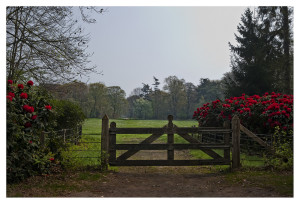 It’s been months since I’ve written in Seasonal Wisdom! My apologies and I’m about to remedy this situation. But one main reason is that I’ve been working on a full-time contract with the University of California’s Office of President to write about food and agriculture for its blog UCFoodObserver.com.
It’s been months since I’ve written in Seasonal Wisdom! My apologies and I’m about to remedy this situation. But one main reason is that I’ve been working on a full-time contract with the University of California’s Office of President to write about food and agriculture for its blog UCFoodObserver.com.
Why in the world should you care? Well, I’ve learned quite a bit that I wanted to share, including edible gardening tips. If you like food – and who doesn’t, really? – check out these delicious stories. Photo: Martijn de Valk.
But, first, a bit about UC Food Observer
The UC Food Observer is your daily serving of must-read news from the world of food. It includes interviews and analysis of influential agricultural and food people and trends. And it supports the University of California Global Food Initiative, which addresses one of the critical issues of our time: how to sustainably and nutritiously feed a world population expected to reach eight billion by 2025.
I’m the assistant editor and work closely with Rose Hayden-Smith, who is renowned for her knowledge of sustainable agriculture and food history. You may remember these stories about her wartime garden research here and here. Rose is wonderfully talented, inspiring and knowledgeable. It’s been a delight, and I’ve learned a lot from her.
Seven Yummy Stories
Here are seven stories you might enjoy in no particular order:
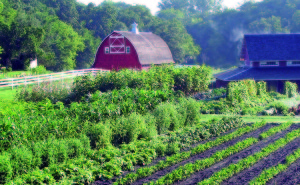
Photo: Seed Savers Exchange
1) Genetic Diversity is Key … And You Can Help
Learn how important open-pollinated heirloom seeds are towards saving heritage foods. See how many once-beloved foods are disappearing, and why gardeners can play an important role in protecting and increasing this genetic diversity.
“Participatory conservation is very important to our work. It’s not enough for us to have a seed bank and keep these seeds in a Fort Knox-like setting. We want these seeds to grow and be maintained in different gardens around the country and world.” John Torgrimson, Executive Director, Seed Savers Exchange
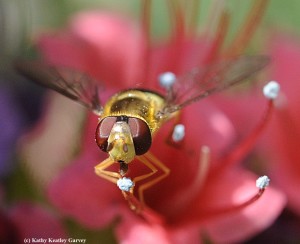
Photo: Kathy Keatley Garvey
2) Pollinators are Beautiful
On most days, you’ll find Kathy Keatley Garvey outside finding, photographing and documenting insects, especially pollinators. This Communications Specialist for UC Davis Department of Entomology and Nematology has received international recognition for her photos.
“I see the world through a viewfinder. The work that I do is about the diversity of pollinators, their importance in our food supply and ecosystem, the beauty and the awe, and how we can protect them. Bees are responsible for pollinating one-third of the food we eat. They are crucial to our ecosystem.” Kathy Keatley Garvey
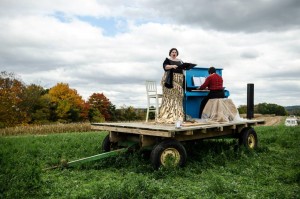
Photo: Wormfarm Institute
3) Agri + Culture = A Good Idea
Nestled among the rolling hills of the unglaciated region of south central Wisconsin you’ll find the Wormfarm Institute, a 40-acre organic vegetable farm and creative hub that is winning applause for reconnecting the link between “agri-culture.”
“For thousands of years, farmers in cultures around the world interwove dance, music and art through rituals of planting and the harvest in celebration of the land and those who care for it.” Donna Neuwirth, co-founder of Wormfarm Institute
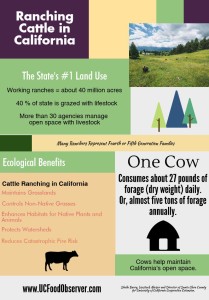
4) Cattle Ranching has Ecological Benefits
Did you know livestock is California’s number-one land use? I certainly didn’t, and I’m not alone.
This complex connection of California ranching to food production is a mystery for many, according to Sheila Barry, Livestock Advisor and Director of Santa Clara County for University of California Cooperative Extension. She tells me:
“Working ranches occupy roughly 40 million acres in California. Whether these working ranches are public land or privately owned, many ranchers represent the fourth or fifth generations stewarding the land and their livestock.”
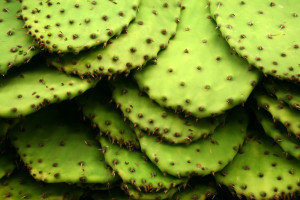
Photo: DotPolka
5) Mexican Food Deserves Another Look
Who told you Mexican food was unhealthy? It simply isn’t true, according to two professors in the San Francisco Bay Area, who co-authored “Decolonize Your Diet.”
Their research shows traditional, indigenous food from Mexico (available before the Spanish colonists arrived) is misunderstood and is actually among the world’s healthiest foods. Luz Calvo, Professor of Ethnic Studies at Cal State East Bay told me:
“The Latino/a Immigrant Paradox led us to look carefully at the health knowledge and practices that immigrants bring with them – especially knowledge about food, recipes, remedios (home remedies), and so forth.
The Latino/a Immigrant Paradox is powerful, because it shows that one does not need to be rich to have good health. But one does need to be connected to ancestral knowledge and culture.”
Read the story. and don’t miss the recipe!
6) Food Sovereignty with Native Americans
In Northwestern Washington, between Seattle and Tacoma, lives the Muckleshoot Indian Tribe. This Indian tribe is composed of descendants of the Duwamish and Upper Puyallup people who inhabited Central Puget Sound for thousands of years before non-Indian settlement.
To learn more about the Muckleshoot people and food sovereignty with Native Americans, I spoke with Valerie Segrest. She is a Native nutrition educator who specializes in local and traditional foods. She serves her community as coordinator of the Muckleshoot Food Sovereignty Project and also works as Traditional Foods and Medicines Program Manager. She also is a storyteller and told me:
“Stories not only provide the knowledge we need to thrive in the world, but also solutions to the complex and major challenges we face in this modern world. There is cultural storytelling, and also just people stories; the stories people carry around on food traditions and how food has improved and changed their lives in positive or negative ways.”
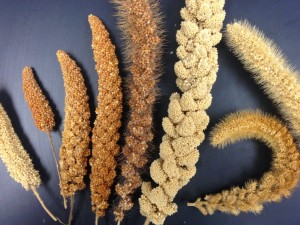
Photo: The Millet Project
7) You Should Try Sorghum and Millets
Sorghum and millets are two ancient grains that have a bright future. For instance, sorghum is gluten free grain with high fiber and healthy nutrients. Millets also deserve a moment of your time.
Millets are a diverse family of grains. They are gluten-free and often contain lower carbohydrate content than rice, corn or wheat, as well as higher levels of protein, fiber and minerals, such calcium, magnesium, phosphorous and iron.
In these articles, you’ll find information on both types of grains, as well as recipe ideas and nutritional information.
Stay tuned for more gardening stories in upcoming weeks! Just in time for another gardening season. What are you looking forward to growing this year?











{ 3 comments }
Glad you’re back! Looks like some interesting reads.
I also think about, what will happen when the world population will become 8 billion. At present world, the population is 7 billion and I am not sure what kind of harmful pesticides is used in agriculture.
Great insight Teresa! Then I will give Sorghum and millets a try! Thanks for sharing!
Comments on this entry are closed.